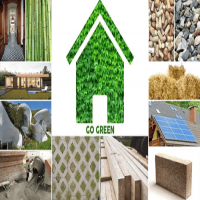Your Complete Guide to Constructing a House

Strong 8k brings an ultra-HD IPTV experience to your living room and your pocket.
Constructing a house is one of the most significant and rewarding investments in a person’s life. Whether you’re a first-time homeowner or a seasoned builder, understanding the process—from planning to finishing—ensures efficiency, compliance, and long-term satisfaction. This guide offers an authoritative yet accessible breakdown of what constructing a house involves, along with practical advice and product insights to help you build smart and safe.
1. Planning and Budgeting: Laying the Foundation for Success
Before any soil is turned, the house construction process begins with thorough planning. This includes defining the scope of the project, selecting the right plot of land, hiring professionals (architects, engineers, and contractors), and most importantly, setting a realistic budget.
Key Considerations:
Zoning Laws & Permits: Ensure the land is zoned for residential use and all building permits are secured to comply with local regulations.
House Design: Work with architects to design a home that fits your lifestyle, budget, and environmental conditions.
Contingency Funds: Allocate at least 10–15% of your budget for unexpected costs—these are almost inevitable in any house construction project.
2. Site Preparation and Foundation: The Structural Bedrock
Once planning is finalized, the construction site is prepared. This includes clearing, leveling, and excavating the land. The type of foundation you choose—slab, crawl space, or basement—will depend on the local climate, soil type, and design.
Best Practice: Use high-quality formwork and concrete for your foundation to avoid settling issues later. Moisture barriers and proper drainage systems should also be installed to prevent long-term water damage.
3. Framing and Structural Work: The Skeleton of Your Home
Framing marks the phase when the structure of your home begins to form. The structural framework includes floor joists, wall studs, roof trusses, and subfloors. This phase also involves installing windows and exterior doors.
Recommended Products:
Engineered Wood: Offers better dimensional stability and strength compared to traditional lumber.
Fasteners & Connectors: Use corrosion-resistant screws, nails, and framing anchors to enhance structural integrity, especially in areas prone to high winds or earthquakes.
4. Mechanical, Electrical, and Plumbing (MEP): Systems That Power Your Home
Once the frame is secure, contractors begin installing critical systems such as electrical wiring, plumbing lines, and HVAC ductwork. These systems must be coordinated carefully to avoid clashes and ensure energy efficiency.
Tips for Success:
Use high-efficiency HVAC systems and programmable thermostats to reduce long-term energy costs.
Label electrical panels and plumbing lines clearly for easier future maintenance.
Ensure compliance with national codes like the NEC (National Electrical Code) and IPC (International Plumbing Code).
5. Insulation and Drywall: Enclosing Your Space
Effective insulation is essential for maintaining energy efficiency and ensuring indoor comfort. Popular choices include fiberglass batts, spray foam, and rigid foam boards. Once insulation is completed, drywall is put up to form the inner walls and ceilings.
Insulation Advice: In colder climates, consider using higher R-value insulation, especially in attics and basements. Soundproofing insulation can also be added between rooms for additional comfort.
6. Interior and Exterior Finishes: Bringing Design to Life
This phase includes flooring, cabinetry, painting, lighting fixtures, and all aesthetic details. On the exterior, siding, roofing, gutters, and landscaping are completed.
Product Insights:
Durable Finishes: Choose weather-resistant paints and materials for long-term performance.
Sustainable Options: Bamboo flooring, recycled countertops, and energy-efficient lighting are popular among eco-conscious homeowners.
7. Final Inspections and Handover: Ensuring Quality and Compliance
Before moving in, your house must pass several inspections to ensure it meets all building codes and safety standards. A final walkthrough with your contractor is essential to identify any last-minute fixes or adjustments.
Checklist:
- Electrical, plumbing, and HVAC system checks
- Smoke detector and carbon monoxide alarm functionality
- Sealing and weatherproofing validations
Conclusion: Build with Confidence
Constructing a house is a complex journey, but with the right knowledge and tools, it becomes a manageable and fulfilling process. By prioritizing planning, choosing the right materials, and ensuring code compliance, you set the stage for a durable and comfortable living space.
Whether you're a homeowner, builder, or contractor, investing in quality materials and professional expertise ensures that your house isn’t just built—but built to last. Use this guide as your roadmap, and build your dream with confidence.
more info visit: pvc board surabaya
Note: IndiBlogHub features both user-submitted and editorial content. We do not verify third-party contributions. Read our Disclaimer and Privacy Policyfor details.


